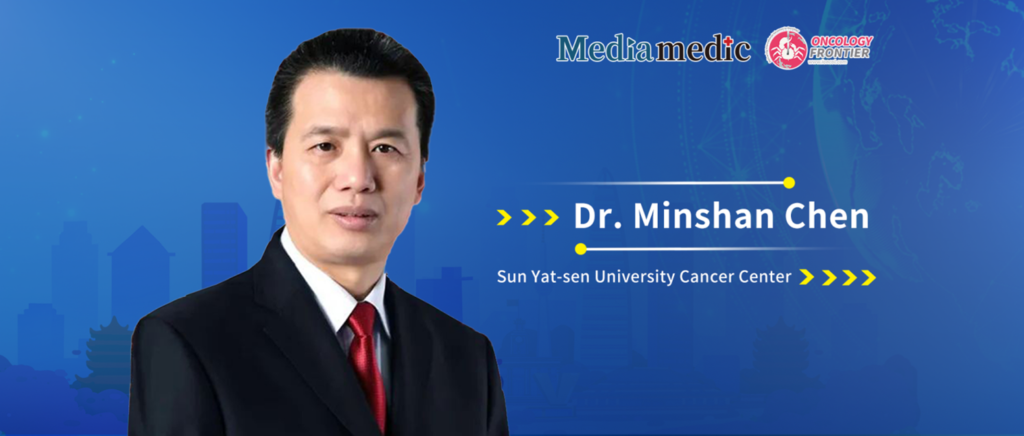
Editor’s Note: From October 24-27, 2024, the 9th Academic Symposium of the International Hepato-Pancreato-Biliary Association (IHPBA) China Chapter took place in Wuhan. In the field of liver cancer adjuvant therapy, Dr. Minshan Chen from the Sun Yat-sen University Cancer Center presented new treatment strategies. Oncology Frontier invited Prof. Chen for an in-depth interview, where he shared insights on this topic. Prof. Chen highlighted that traditional postoperative transcatheter arterial chemoembolization (TACE) is becoming outdated, as it shows limited efficacy in addressing large liver tumors and residual micro-lesions. In contrast, hepatic arterial infusion chemotherapy (HAIC), validated through a decade of clinical research, has proven highly effective for advanced liver cancer. HAIC not only shrinks tumor size for resectability but also shows promising results for large tumors and patients with vascular invasion. Prof. Chen emphasized that in liver cancer treatment, patient survival and quality of life should be prioritized over the focus on recurrence alone.New Strategy for Adjuvant Therapy in Liver Cancer: Replacing TACE with HAIC
Dr. Minshan Chen: Postoperative TACE as adjuvant therapy for liver cancer has been in use since we introduced it in 1994, spanning nearly 30 years. However, with advancements in medical technology, I feel that this method has become outdated. Currently, our department no longer uses it as a routine clinical treatment. Regarding postoperative TACE, there are two points to clarify: First, I do not recommend it as a routine postoperative intervention. Second, if treatment is necessary, HAIC should be considered over TACE.
Initially, postoperative TACE targeted high-risk recurrence and residual lesions. However, with advancements like MRI, we can now detect more micro-lesions, making TACE less relevant. Long-term clinical studies show TACE has limited efficacy in addressing micro-lesions or vascular micro-thrombi.
In contrast, HAIC appears more advantageous in clearing microscopic vascular thrombi and small lesions. Therefore, for postoperative adjuvant therapy, especially for high-risk recurrence cases, I believe HAIC is a better choice. If the situation permits, we may consider close monitoring instead of immediate treatment, intervening only if recurrence occurs. This is my current approach to adjuvant therapy for liver cancer.
HAIC’s Role and Misapplication in Liver Cancer Treatment
Dr. Minshan Chen: HAIC is an innovative interventional therapy developed by our team at the Sun Yat-sen University Cancer Center over the past decade. Multiple high-level clinical studies and widespread application in our center (with approximately 3,000-5,000 cases annually) have confirmed HAIC’s critical role in advanced liver cancer treatment. This is a significant achievement for our center.
Clinically, HAIC constitutes about 70-80% of our interventional treatments. It has shown remarkable efficacy in specific cases. First, HAIC is ideal for conversion therapy; it significantly reduces tumor size, enabling resectable outcomes for previously unresectable liver cancers. Second, it is effective against large liver tumors (e.g., tumors ≥10 cm or 7 cm in diameter). Traditional treatments are often less effective for large tumors, whereas HAIC provides stronger therapeutic benefits. Additionally, HAIC is effective for patients with vascular invasion. This conclusion is supported by both our center’s clinical data and the validation from other centers and numerous clinicians across the country.
A notable issue in current domestic practice is that many doctors prefer embolization first, followed by infusion chemotherapy. This approach is, in fact, a misconception. For unresectable liver cancer, we typically recommend 2-4 HAIC sessions first. If the results are suboptimal, then embolization may be considered. However, performing arterial embolization first prevents effective infusion chemotherapy, significantly reducing treatment efficacy. Therefore, we believe combining embolization and chemotherapy in this sequence is erroneous. At our center, we use a weak embolization approach, with minimal iodized oil rather than strong embolization agents like microspheres or gelatin sponges. This distinction is essential. Currently, the widespread practice of embolization-first approaches urgently needs correction.
Caution in Routine Targeted Therapy Post-Surgery — Insights from the IMbrave050 Clinical Study
Dr. Minshan Chen: IMbrave050 is a high-standard, evidence-based clinical study, and I sincerely appreciate the efforts by Roche. However, the final result of the study was negative.
As early as July 2023, I questioned the rationale behind routine targeted therapy after surgery, predicting that IMbrave050’s results might not be favorable. Even with the interim positive results, I doubted that it justified routine postoperative targeted therapy as a standard.
The IMbrave050 results reinforce my stance. Since the T+A regimen, widely regarded as the optimal targeted immunotherapy combination, did not yield positive results, the value of routine drug therapy post-surgery is significantly reduced. I believe that no company would invest as heavily in this area moving forward.
Thus, we need to reassess the role of routine targeted therapy post-surgery. Perhaps targeted immunotherapy should be reserved as the last line of defense in multidisciplinary liver cancer treatment, rather than being used indiscriminately as an adjuvant therapy. Advancing its use may not necessarily benefit patients.
Prudent Approach to Adjuvant Therapy: Prioritizing Survival and Quality of Life
Dr. Minshan Chen: At this critical juncture, I emphasize caution against overextending adjuvant therapy in cases without clear residual tumors. For adjuvant therapy, we must maintain a high level of prudence, as any form of adjuvant treatment carries potential risks and burdens. Overemphasis on postoperative recurrence—sometimes exaggerating its risk—is inappropriate.
In treating liver cancer patients, survival and quality of life should always be our ultimate goals. While recurrence is a concern, it should not be overly magnified. Addressing recurrence is important, but it is not the final objective of clinical medicine.
To reiterate, our pursuit should be the patient’s long-term survival and quality of life, rather than merely aiming for a low recurrence rate. This should be the core principle guiding our treatment planning.
Dr. Minshan Chen
- Head of Liver Cancer Treatment Department, Sun Yat-sen University Cancer Center
- Lead in pioneering HAIC therapy with ten years of clinical research validation
- Recognized for significant contributions in the development of innovative liver cancer treatment strategies
- Expert in managing advanced liver cancer cases


